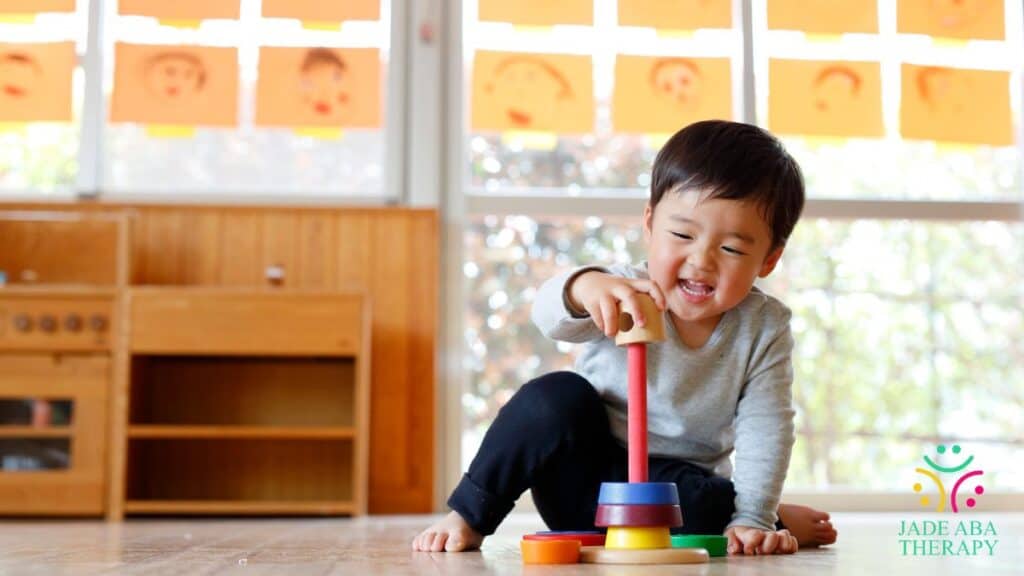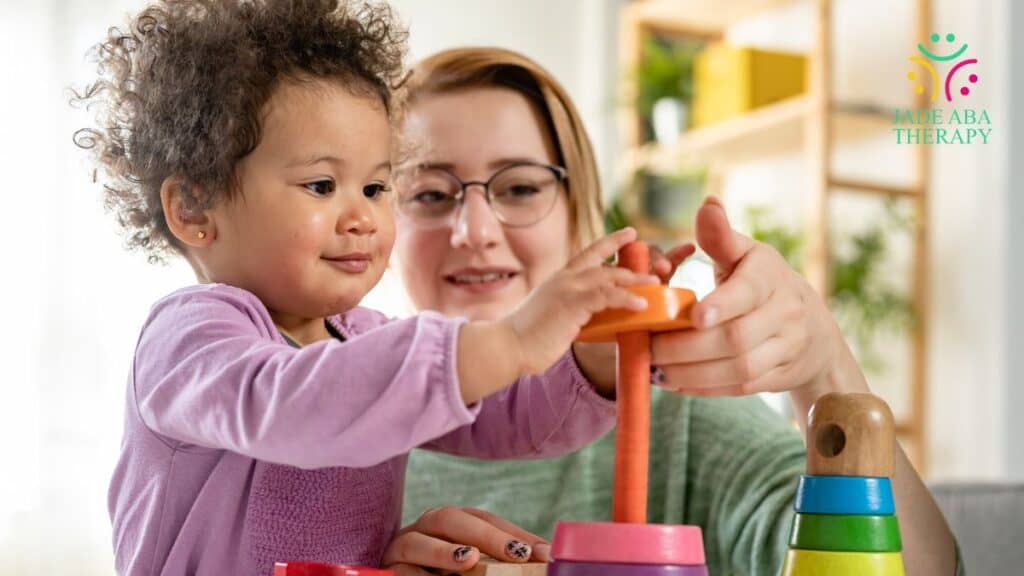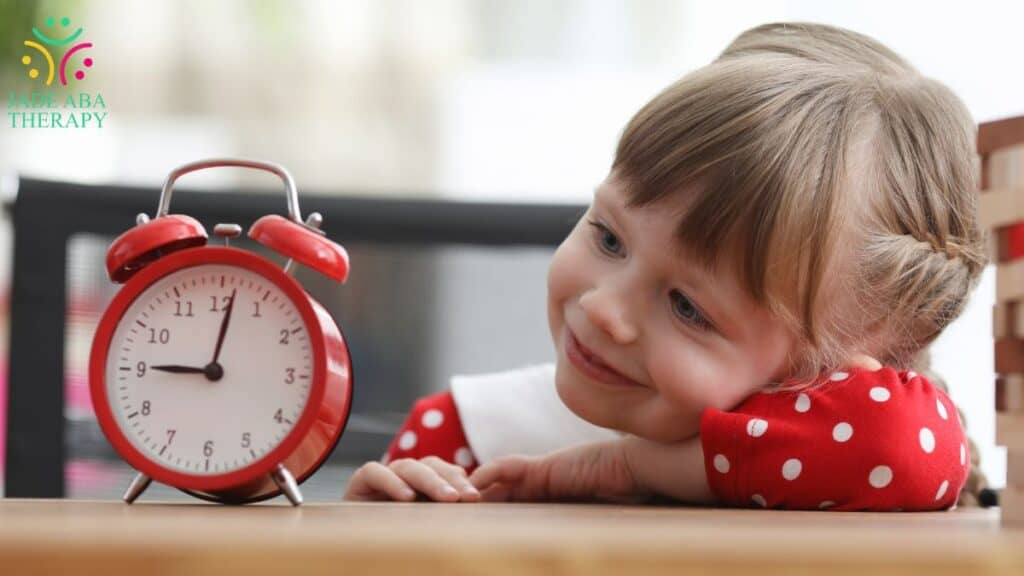Key Points:
- ABA therapy hours depend on your child’s goals, age, and stamina.
- Comprehensive plans usually range from 25 to 40 hours per week, while focused programs run 10 to 25 hours.
- The goal is to match time with learning needs so progress stays steady without overwhelming the child or family.
Choosing ABA therapy hours can feel like a moving target. Parents want enough time for real progress without burning out the family. ABA therapy uses structured teaching to build language, play, independence, and behavior skills. The right dose balances your child’s goals, stamina, and schedule.
By the end of this read, you will know the common hour ranges, what “full time” really means, how school affects scheduling, and how teams adjust hours as skills grow.
How Many ABA Therapy Hours Are Recommended?
Hour recommendations come from the scope of treatment. Comprehensive ABA targets multiple domains at once, such as communication, daily living, and social skills. Focused ABA targets one or two high-priority goals, such as toilet training or reducing self-injury.
Most clinical guidance points to a floor for intensive work. Pediatric experts note that comprehensive programs typically deliver at least 25 hours per week for young children, spread across most days of the week.
Focused ABA runs lighter. Clinicians often set 10 to 25 hours per week for targeted goals, then scale up or down after a short trial. A practical way to think about it is scope first, then hours. If the plan spans many skill areas, expect hours closer to the comprehensive range. If goals are narrow, a focused range works.
Typical starting points
- Comprehensive plan: 25 to 40 hours per week across 5 days
- Focused plan: 10 to 25 hours per week across 3 to 5 days
- Parent training add-ons: 1 to 2 hours per week woven into home routines
What shifts the number
- Goal load and urgency
- Age and stamina
- Severity and safety risks
- Team availability and insurance rules
- Competing schedules at school and home
The phrase ABA therapy hours shows up often in authorizations and care plans. Use it with a goal-first lens. Hours follow objectives, not the other way around.

Early Intensity And Outcomes: What Does Research Show?
Intensity in the early years can change the slope of progress. One landmark trial of a comprehensive behavioral model delivered about 20 hours per week for two years and reported a 17-point average gain in IQ along with improvements in language and adaptive skills.
Recent summaries of early-childhood intervention literature describe common recommendations of 20 to 40 hours per week over multiple years for intensive approaches, while noting variability in individual response.
How to use these findings
- Treat intensity as one tool among many. Quality of instruction and family carryover matter as much as total minutes.
- Watch for skill generalization at home, in community, and at school.
- Re-size programs after an initial 8 to 12 weeks if progress is slower or faster than expected.
Signals that hours may need to shift
- Goals are met faster than projected
- Fatigue or behavior worsens late in sessions
- Parent-implemented strategies show strong carryover
- New safety or interference behaviors appear
ABA Therapy Hours Per Week: Matching Goals To Dose
The number should answer the question: how many minutes do these goals need. Start with a clear set of measurable targets, then map the time needed to teach, practice, and generalize.
For toddlers and preschoolers
- Language bursts and play routines need many short practice windows
- Caregiver training multiplies learning outside sessions
- A comprehensive plan often starts near the 25 to 40 range
For school-age children
- Some goals become classroom-anchored
- Focused plans may fit 10 to 25 hours per week
- Coordination time with school teams becomes a weekly task
Quick planning steps
- List goals by domain and priority.
- Estimate minutes per goal per day, including repetition and breaks.
- Add parent-training time needed to support practice between sessions.
- Add team meeting and data review minutes.
- Compare the total to the average ABA therapy hours per week discussed with your BCBA.
When families ask, “How many hours a day is ABA therapy?” the honest answer is it depends on goal load and tolerance. Some children do best with two to four shorter blocks. Others tolerate one longer block and a shorter booster later.

ABA Therapy During School Hours: What Are The Options?
School attendance shapes weekday availability. Most states set time requirements that translate to roughly six to seven hours per day of school for many grades. Across states with annual time minimums, fourth graders average about 998 instructional hours per year, which helps explain why many families schedule after-school or weekend sessions.
Ways to blend ABA with school
- Pull-out services during study hall or specials if the school agrees
- After-school blocks three to five days per week
- Weekend hours to reach your target total
- In-school consultation to align behavior supports and data collection
- Home-school split for generalization
Coordination checklist
- Align goals with the IEP where possible
- Share reinforcement strategies across settings
- Use one data language so trends match
- Decide who tracks daily notes and who graphs weekly
When families explore ABA therapy during school hours, teams weigh learning opportunities on campus against the intensity needed for specific skill gaps. Many children use a hybrid schedule to meet both needs.
What Do Real-World ABA Therapy Hours Look Like?
Programs breathe over time. Some begin intensively for jump-starting language and daily living skills, then taper to maintenance and new targets. Others begin focused for safety or toilet training, then expand.
Sample weekly builds
- 10 hours focused: three weekday blocks plus one weekend block, adjusted to your Maryland service area
- 20 hours mixed: four weekday afternoons plus a Saturday session
- 30 hours comprehensive: five weekday blocks with one shorter booster
- 40 hours comprehensive: full-day style during breaks, split blocks during school weeks
Scheduling tips that keep plans workable
- Use natural routines for practice, such as meals and bath time
- Protect quiet time for rest and play
- Keep transport time low by clustering sessions
- Revisit the plan every 8 to 12 weeks based on data and family feedback
When discussing ABA therapy recommended hours, teams should model options that fit your calendar. Hour totals work best when they can actually be delivered.

From Assessment To Authorization: How Teams Set Hours
Hour setting follows a process. The BCBA conducts an initial assessment, defines goals, and drafts a treatment plan with projected minutes per target. Insurers review the plan and approve a number for a set period, often 3 to 6 months. Review ABA therapy and insurance details before submitting.
What influences approvals
- Documented need tied to safety or major skill gaps
- Objective baselines and clear mastery criteria
- Parent-training time to support carryover
- Coordination notes with school or other providers
How to prepare
- Provide examples of how challenges affect daily life.
- Share results from school or prior therapies.
- Keep a short log of behaviors, triggers, and successful strategies.
- Ask the team how many hours of ABA therapy is needed and ensure the answer connects to each goal.
If the approved number misses the mark, teams submit updated data and a revised plan. Families using Maryland Medicaid coverage should check current hour limits by age. Appeals work best when they show clear progress at current hours and a strong rationale for the requested change.

Progress Checks: When To Adjust ABA Therapy Hours
Adjustments keep programs effective and humane. Track signs ABA therapy is working to time changes well. If skills plateau or fatigue rises, hours or session structure may need to change. If goals are met quickly, hours may step down while new targets roll in.
Change triggers
- Three to four weeks without progress on priority goals
- Frequent refusals late in sessions
- New skills emerging that need generalization
- Family schedule changes affecting attendance
Adjustment options
- Split long sessions into shorter blocks
- Shift minutes from one goal to another
- Add a weekly community-based session
- Step down hours while adding parent-led practice
Use the phrase ABA therapy hours in team notes so everyone watches the same dial. Hours are a lever, not a label.
Sample Daily Layouts At Different Hour Totals
A day plan shows how minutes turn into learning.
At 2 to 3 hours per day (focused)
- 10 to 15 minute teaching bursts with brief play breaks
- Natural environment teaching during meals and routines
- Parent-coaching at the end to plan home practice
At 4 to 6 hours per day (comprehensive)
- Morning block with discrete trial and play-based practice. Rotate advanced ABA techniques to keep skills generalizing.
- Midday break and gross-motor time
- Afternoon block with social skills and daily living tasks
- Short debrief with caregivers
At 7 to 8 hours per day (school break model)
- Rotating blocks across domains
- Community practice for generalization
- Built-in quiet time and sensory breaks
Hours mean little without smart pacing, frequent reinforcement, and meaningful goals.

Frequently Asked Questions
How many hours is full time in an ABA?
Full-time ABA therapy usually ranges from 25 to 40 hours per week, depending on age, goals, and tolerance. Young children often receive higher hours for faster skill growth, with parent coaching added beyond direct service. Schedules adjust seasonally between full-day and part-day sessions.
What time does ABA therapy start?
ABA therapy start times align with each family’s daily routine and the child’s alert periods. Home sessions often begin after school on weekdays and in the morning or early afternoon on weekends. During school breaks, longer morning-to-afternoon schedules work best when the child learns most effectively.
Why is ABA 40 hours a week?
ABA therapy often reaches 40 hours per week because intensive, repeated practice builds skills faster in language, play, and daily routines. Research supports strong gains from 20 to 40 hours weekly, with 25 hours often used as a minimum for comprehensive programs. Actual hours depend on each child’s goals and stamina.
Plan The Right ABA Hours For Your Child
Finding the right dose is about fit and follow-through. An hour plan that your family can deliver consistently will beat a larger plan that disrupts sleep, meals, or school. In-home ABA therapy in Maryland and Virginia can be tailored around your child’s goals and your weekly rhythm so practice happens where life happens.
At Jade ABA Therapy, we build programs that align hours with clear priorities, track progress closely, and recalibrate when signals show it is time. If you want a data-driven plan that respects your calendar and your child’s stamina, reach out to schedule an intake and see how a personalized program of ABA therapy can help your child grow.




